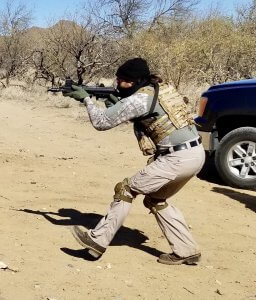Kalashnikov Selector Manipulations
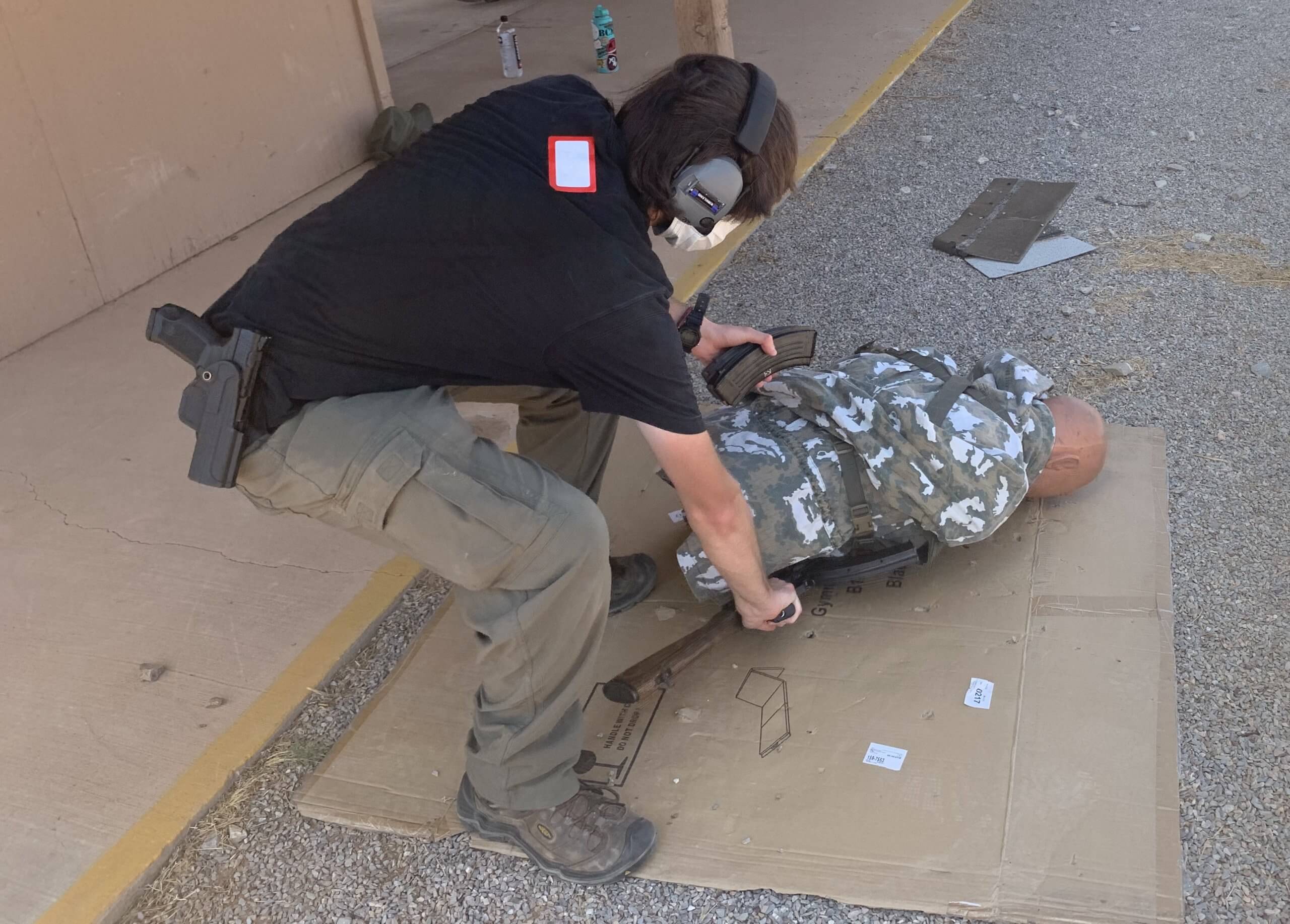
Run the AK like an AK, not an AR
The instructor in the photo below is holding a hatchet in one hand, and a Sykes-Fairbain stiletto in the other.
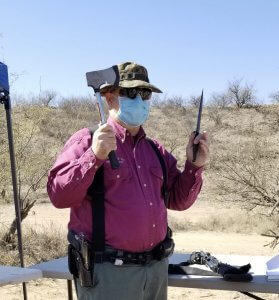
The stiletto was designed primarily as a thrusting instrument for Allied WWII commandos to take out sentries prior to raids. The axe can be used to chop or pound in tent stakes.
You can stop a threat with either one, I suppose, but they are not the same thing. So why would you try to use them the same way?
The commando dagger is a precision instrument, (very) roughly analogous to the AR series carbines. It is sharp and somewhat fragile. The hatchet is, well, an axe, roughly analogous to the AK series. (Some of my old-school instructors have compared them to a prom queen and a biker babe).
SAFETY SELECTOR
One huge difference between the AK and the AR series is in manipulation of the safety selector.
On weapons with a “go fast” switch, this is called the mode of fire selector. It’s telling that the first postion down from safe on military AKs is fully automatic; all the way down is semi. This is in direct contrast with US M16s and M4s, on which the first position is semi-automatic, reflecting a preference for aimed, selective fire in US defensive doctrine. Soviet small arms doctrine was always offensively oriented; they called short bursts of automatic from the rib level “marching fire,” to be used to keep decadent Western heads down while storming enemy positions. If this sort of thing interests you, you can read more in the EFK section, in the article Burst Fire Misconceptions.
Whether or not you run a full-auto capable rifle, the main differences between AK and AR safety selector manipulations are driven by their locations. The AK selector’s position on the right side of the weapon dictates both HOW and WHEN we use it.
Left vs Right Handed Manipulations
Something like 5 out of 6 shooters are right handed.
You should able to operate your weapons ambidextrously, but as a general rule we prefer to run long guns with the side of the dominant eye, regardless of handedness.
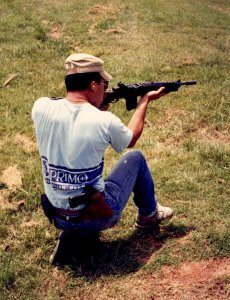
TO HELP YOU UNDERSTAND THIS NARRATIVE, THE HAND ATTACHED TO THE FINGER PULLING THE TRIGGER WILL BE THE DESIGNATED “HANDEDNESS,” to wit: if you are holding the back of the AK by the pistol grip with your right hand, and the front of it (the fore grip or hand guard) with your left hand, we will say you are operating it “right handed,” regardless of which hand you are using to work the bolt, or whatever.
In the mid 20th century, the manual of arms (way an operator is supposed to handle it) for most rifles called for them to be pinned between the right shoulder and the support (left) hand, or held with the support hand under the center of balance, while reloading and other manipulations were conducted with the right hand. Thus, the charging handles of the M1 Garand, the M1 carbine, the Simonov carbine (SKS), the M14, and the Kalashnikov were all on the right side. Thus also “M1 thumb”–a malady from pushing in the en-bloc clip and then releasing the bolt before your thumb can get out of the way–almost invariably affected the RIGHT thumb.
Been there. Done that.
The safety selector of the Garand is in the front of trigger guard, and can be pushed forward out of engagement (from safe to fire) by whichever finger, right or left, is in the trigger guard. The safety of the Simonov is on the right side of the trigger guard and is meant to be manipulated with the right index finger. The safety of the AK is along the right side, and can be manipulated with the right hand, regardless of handedness (it’s easier for a leftie to do it with the right hand; I wonder if Mikhael Kalashnikov was left handed).
Military small arms got smaller and lighter after WWII (except for pistols, which got like pregnant guppies). The ergonomics of the AR-15 series M-16s and M-4s were such that a right handed shooter could easily operate the mode of fire (“safety”) selector with the right thumb, and the mag release with the right index finger. Southpaw AR operators could use either their left thumb to take it off safe, or perhaps the first knuckle of their left index finger. Lefties used the right thumb on the AR mag release. The AR charging handle could be manipulated with either hand, but was easier to unlatch with the left hand. For all these reasons, there was little need to take the dominant hand off the pistol grip, moving your trigger finger far from the bang switch, except perhaps for administrative unloading.
The FN FAL used by most of our NATO allies (and both sides in the Falklands / Malvinas war) had a charging handle on the left side, more easily manipulated with the left hand, and a mode of fire selector manipulated by the right thumb when the right hand was on the pistol grip.
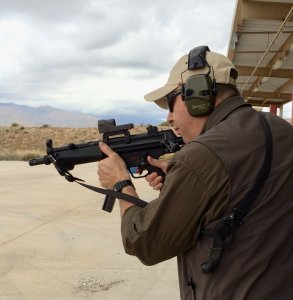 H&K G-3s and MP-5s brought to us by our West German allies were the same (although the selector required a particularly long right thumb).
H&K G-3s and MP-5s brought to us by our West German allies were the same (although the selector required a particularly long right thumb).
Accordingly, in Western long arm doctrine, us right handers went to manipulating the rifle (inserting mags, pulling the charging handle, etc) with the left hand, while the right hand stayed glued to the pistol grip, ready for action (wiping off the safety and pulling the trigger) at a moment’s notice.
As a patrol leader practicing ABGD (Air Base Ground Defense) at Camp Bullis, near San Antonio, TX, I used my left arm to give hand signals to the members of my patrol who were to the left of me. When I let go of the pistol grip, even for a moment, to signal to those on my right, I was chastised by one of the cadre. “Never let go of that pistol grip,” he warned.
When the 4th Infantry Division (Mechanized) OpFor detachment at Ft Carson taught us Communist Bloc weapons, they told us what to manipulate, but were not very particular about how we did it.
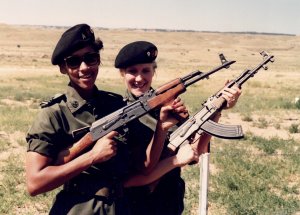
When I got my own AK and started learning from civilian instructors, this right handed, right eye dominant guy continued to run the AK like I had run my M-16–with the right hand glued to the pistol grip.
This meant either holding the AK in the “workspace” (angled like a one handed port arms) while reaching under it to manipulate the right sided charging handle, or “tabling” the AK (holding it horizontal with the left side down) to reach over it with the left hand to operate the charging handle (after wiping the selector with the left thumb). Reaching under tended to work better, because THE AK SAFETY SELECTOR IS INTEGRAL TO TO THE MANIPULATION OF THE CHARGING HANDLE.
Why you MUST operate the AK selector before other manipulations
A monument to simplicity, the AK’s safety selector also performs other functions. In its upward position, it serves as a dust cover for the receiver. It also prevents the bolt from moving far enough back to either chamber or eject a cartridge, when in that upward “safe” position. Accordingly, before you can chamber a round, you MUST lower the safety selector.
When reaching under the receiver with the left hand, a right side dominant shooter can wipe the safety down with the left finger tips before grabbing the charging handle with the left thumb, or moving it with the pinkie side of the bladed left hand.
HOW to operate the selector alone
If you already have a round in the chamber (see Alert Carry Conditions), you can wipe the safety down with your right hand, regardless of whether you are holding the AK right or left handed.
The “shelf” (horizontal finger engagement surface) on the standard AK is at its forward end. With small-to-medium sized hands that puts the distance between it and the back of the pistol grip about equal to the distance between the web of the thumb (which will be around the back of the pistol grip) and the end of the middle finger.
AKs imported into the US have a high percentage of US-made aftermarket parts, to comply with the intent of 18 USC 922(r). Although we call that being “922(r) compliant,” the letter of that law–the specific detail law enforcers use as a guide to differentiate compliance from non-compliance–is actually in the Code of Federal Regulation, or CFRs, at 27 CFR 178.39. One of the parts that is commonly made in the US, so your AK can look like an AK while still being in compliance with the CFRs, is the pistol grip.
The original AK pistol grip is very small.
Some US made grips replicate the original, but most tacticool American made aftermarket grips are larger than the original AK grip, also stretching the distance between the back of the grip and the front of the selector lever.
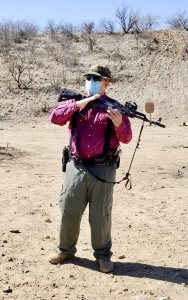 Regardless of what grip is on the AK, an operator running an AK right handed can probably reach the front of the selector lever by opening the right hand and extending the fingers together, almost like a salute, with the web of the thumb hooked on the back of the pistol grip. This leaves the hand more or less indexed to take immediate action with the trigger, if necessary.
Regardless of what grip is on the AK, an operator running an AK right handed can probably reach the front of the selector lever by opening the right hand and extending the fingers together, almost like a salute, with the web of the thumb hooked on the back of the pistol grip. This leaves the hand more or less indexed to take immediate action with the trigger, if necessary.
I met a man who had helped to overthrow Libyan dictator and all around bad-guy Mu’ammar Al-Qadhdhāfī during the so-called “Arab Spring.” The man I met shot rifles almost entirely right handed. He said he had received some instruction in Libya from a US Special Forces advisor, who told him to leave his left hand glued to the fore grip, and to manipulate the charging handle / safety with his right hand, letting go of the pistol grip when necessary. Advantages of one way over the other are extant, if minimal.
If you learned to run your AK that way, you might as well stick with it. Otherwise, you could have some confusion between the PRIMACY and the RECENCY of your training.
Primacy of Training
Under stress, in the field, on the street, in the doorway, you are likely to revert to the way you practiced first and most. There may not be a “best” way. Rather, every way has advantages and disadvantages. Some ways have more of one or the other than different ways.
It’s best to train with quality methods from the start–lest ye have to train a great deal more to unlearn less effective habits.
Hardware solutions to the software (training) issue of AK safety manipulation
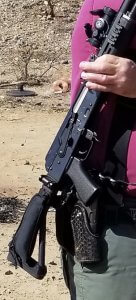
Krebs makes a safety selector with a larger shelf. It’s close enough to the pistol grip to be easily manipulated by the right index finger.
Incidentally, the safety selector is NOT one of the parts that can make a rifle 922(r) compliant. Still, the Krebs can have two major advantages.
The first, and most important, is a notch you can lock the charging handle into if you want the bolt to stay to the rear for some (usually administrative) reason. It will NOT automatically unlatch like most hold-opens when the charging handle is pulled all the way to the rear and released. However, with a little practice, one can get fairly smooth at the dual motions needed to sent a bolt locked open thusly forward into battery.
Some, but not all Krebs levers also have the aforementioned rounded shelf about midway down the length of the safety lever. This gives the right index finger some purchase to move the selector from safe to fire without opening up one’s hold on the pistol grip.
The SAM 7 has a modified thumb safety on the left side, similar in principle to the Galil’s. If you install an aftermarket grip on your SAM7, you may need to relieve some of it to make room for the thumb selector lever.
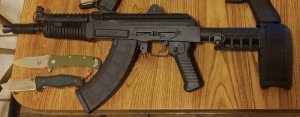
These tools are elegant crutches. Both offer significant operational advantages. However, their use can create a potentially disastrous training scar, called Excalibur Syndrome.
Excalibur, as we all know, was no ordinary sword. Most swords could cut and stab but issuance of Excalibur could also bestow supreme executive power (refer to Monty Python and the Holy Grail for details). It’s nice to have your very own, customized Excalibur. Feel free to call it Glamdring, or Orcrist, or Breaker of Chains, or whatever.
Just understand that training with it may violate the James Bond Principle.

JBP–The James Bond Principle
We all know that James Bond, regardless of which actor plays him, can pick up any weapon–ANY–and make it sing on the first attempt. Without ever practicing. His enemies fall in droves to the first shot, or thrown knife, or harpoon thwack, or whatever. We also know he will always thwart the evil overlord’s plans, and will, in the process, get the girl.
How do we know all these things with certainty?
Because we know the script writer is on his side.
A person of Faith knows the Great Script Writer in the Sky is on her or his side. He has already written the script; we merely have yet to act out the remainer of our part. Plot twists which may appear unfavorable while we’re filming any particular scene may in fact assist with our character development before the end credits.
The Script Writer didn’t make my character very smart. But one way my personal Script Writer, Jesus, stays on my side is, He made me smart enough to practice manipulations which will work on all systems, or at least all systems of that type. That’s the James Bond Principle of Standardized Training.
You may call your personal Script Writer by a different name. But whenever possible, you should strive to follow the James Bond Principle when you practice.
A pistol example of the JBP would be pulling back on the slide, rather than poking at the slide catch. Slide catches come in different sizes, shapes, and locations, but pulling back on the slide and letting it fly should always work.
The JBP inoculates against Excalibur Syndrome.
Excalibur Syndrome: Rare, but Potentially Fatal
An armed public servant or private security professional who practices with a customized, personally owned weapon–say, a semi-auto AK with a Krebs selector–then finds himself protecting a dignitary overseas with a box-stock AK, may accidentally try to wipe a Krebs lever that isn’t there the one time in their life that it matters. That’s Excalibur Syndrome in a nutshell. It’s an extremely rare, but potentially life-threatening disease.
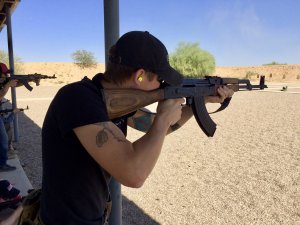
By all means, get a Krebs if you want to. I have one on my “go-to” AK. But I have a standard safety lever on the box-stock AK I use for manipulations practice. If, following a bump in the night, I attempt to manipulate a standard lever but find my right index finger has run into the little shelf on the Krebs, so much the better. The reverse, trying to push a Krebs shelf that isn’t there when I should be reaching for one farther away that always WILL be, would be sub-optimal.
WHEN to operate the selector
Regardless of what type of AK selector you have, the biggest difference between AK and AR safety lever manipulation is timing.
Because the AR safety selector is, in contrast with the AK’s, so convenient, some schools of Armalite manipulation practice “Up” drills:
- Muzzle up, safety down (off);
- Muzzle down, safety up (on).
. . . and so forth, ad nauseum, till wiping the safety off becomes reflexive. I practice Up drills with my M1911A1, which, like the AR, has a thumb safety. The only downside of Up drills is that wiping the safety ON also becomes reflexive.
In the confusing aftermath of a gun battle, your brain will be on overdrive. You will feel starved for information (the voice of personal experience speaks). Are there more bad guys out there? Is the first bad guy down for the count, or just down for the moment? Or, Where did he go? In such uncertain times, you should not be in a rush to put the safety back on, regardless of what weapons system you are running.
With your Kalashnikov’s less-than-convenient safety lever, you should be in even less of a rush to put it back on safe.
You should take it OFF safe earlier, and often.
The rule for AK safety manipulations is, if it looks like even a remote possibility you could get into a fight, push the safety lever down NOW. In practical application, any time the AK is in hand for operational purposes, take the safety off and leave it there.
Of course, this takes the burden of responsibility for not having negligent discharges off of a piece of sheet steel and places it squarely on your shoulders–or more specifically, on your trigger finger. Where it really always has been.
The genesis of this article was a training summary (after action report) I did for a Kalashnikov class.
–George H, Lead Instructor, Heloderm LLC
